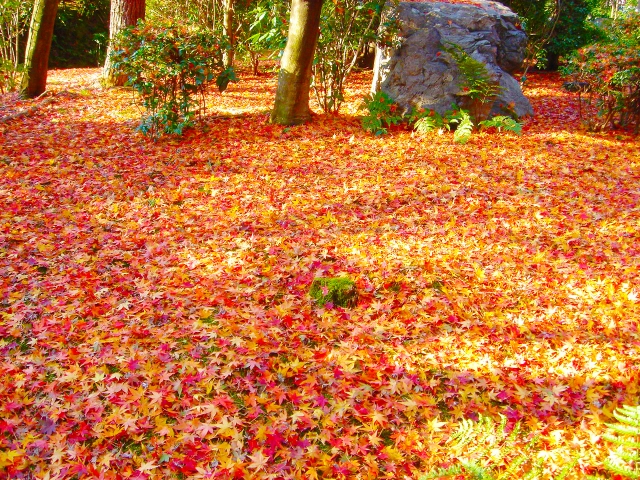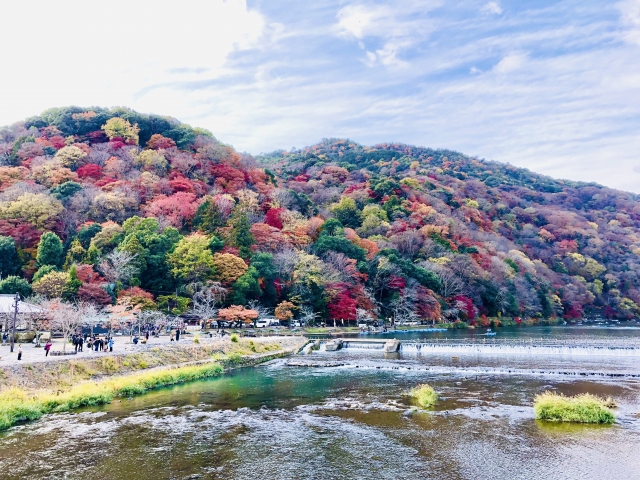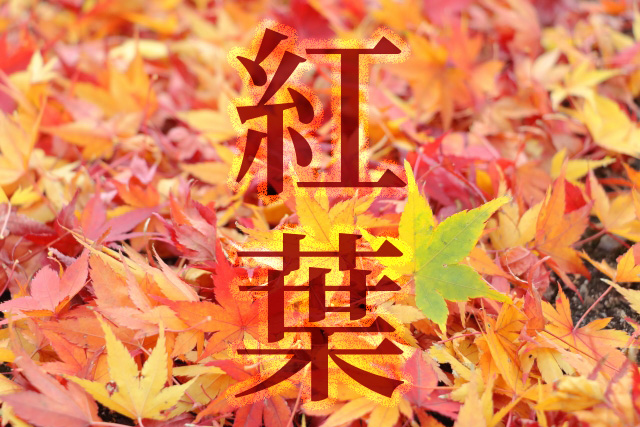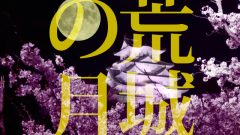Momiji
Aki no yuuhi ni teru yama momiji
Koi mo usui mo kazu aru naka ni
Matsu wo irodoru kaede ya tsuta wa
Yama no fumoto no susomoyouTani no nagare ni chiriyuku momiji
Nami ni yurarete hanarete yotte
Aka ya kiiro no iro samazama ni
Mizu no ue nimo oru nishikiLyricist:TAKANO Tatsuyuki
Composer:OKANO Teiichi
in 1911
Autumn leaves
Autumn leaves are visible in the mountains illuminated by the autumn sunset.
There are dark colors, light colors, and various colors.
The maple, ivy, which colors the pine,
It adds color to the foot of the mountain.
Maple leaves fall into the river flowing through the valley.
The waves are shaking, leaving and approaching.
Various colors of red and yellow
Are woven on the water.

The song “Momiji” is a traditional piece that symbolizes the beauty of autumn in Japan. The word “Momiji” (紅葉), written in Kanji, also has another reading, “Kouyou,” which refers to the changing colors of autumn leaves, a phenomenon highly appreciated in Japanese culture. This word reflects the broader cultural significance of the season and the aesthetics of nature in Japan. The appreciation of “Kouyou” is not only a modern pastime but is deeply rooted in Japanese literature and art.

One of the most popular activities during the autumn season is known as “Momiji-gari” (紅葉狩り), which literally means “hunting for autumn leaves.” However, the term does not imply actual hunting, but rather refers to the practice of traveling to scenic spots to view and admire the changing colors of the foliage. Similar to how people gather to enjoy cherry blossoms in the spring (a practice known as “hanami”), “Momiji-gari” is a cultural activity where people go out to appreciate the beauty of nature in its autumnal form. This tradition is deeply embedded in Japanese culture, reflecting a unique way of connecting with the seasonal rhythms of the natural world.

In Japanese poetry, especially in the form of waka and haiku, the transition from summer to autumn is a recurring theme, often symbolizing the impermanence of life, a concept central to Japanese aesthetics. The falling leaves of deciduous trees serve as a poignant metaphor for the fleeting nature of existence, known as mono no aware. This philosophical reflection is central to classical Japanese literature and contributes to the deeper emotional resonance of autumn imagery in the arts.

autumn leaves and Nishikigoi carp
Despite the profound themes underlying the song “Momiji,” the lyrics themselves are remarkably straightforward and accessible, which is why it has been cherished by people of all ages for generations. Even children can grasp its meaning, which adds to its widespread popularity and enduring appeal. This balance between simplicity and depth is a hallmark of much Japanese cultural expression.
The lyricist, TAKANO Yasuyuki, drew inspiration from the spectacular autumn foliage he witnessed near Kumanotaira Station, a location that had already been abandoned at the time. The contrast between the station’s deserted state and the vivid beauty of the surrounding leaves reflects a sense of nostalgia and the passage of time, further enriching the song’s emotional depth.

Kouyou in Arashiyama, Kyoto, like a pastel painting
In Japan, the progression of autumn colors follows what is known as the “autumn foliage front,” which moves gradually from the northern to the southern regions of the archipelago. This is a reverse of the “cherry-blossom front” observed in spring, where the blooming of cherry blossoms travels northward. The arrival of autumn foliage, therefore, serves as a natural prelude to the coming of winter, marking the cyclical rhythm of the seasons that plays a significant role in the Japanese connection to nature.
“Momiji” has rightfully earned its place as one of the “100 Best Japanese Songs,” a distinction that highlights its importance in the cultural and musical heritage of Japan. The song not only encapsulates the beauty of autumn but also serves as a reminder of the intricate relationship between nature, time, and human emotion that is deeply ingrained in Japanese culture.

Kamakura, near Kyoto and Tokyo, is also famous for its autumn leaves.







コメント